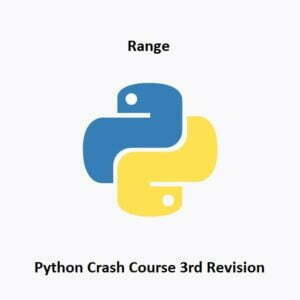
Efficient Iteration and Sequence Generation
The range function in Python is a versatile tool used for generating sequences of numbers efficiently. It’s commonly employed in loops and various data manipulation tasks. Understanding the range function empowers programmers to create controlled sequences for iterations and data generation. Let’s delve into the capabilities of the range function with this Python crash course guide. Explore its syntax, parameters, and applications in sequence generation and loop control.
The range()Function
In Python, the range() function is used to generate a sequence of numbers. It returns an object that represents a sequence of numbers from a start value to an end value, with an optional step value. The range() function can be used in for loops, list comprehensions, or anywhere you need to iterate over a sequence of numbers.
The syntax for the range() function is as follows:
range(start, stop, step)
The start parameter specifies the starting value of the sequence (inclusive). If not provided, it defaults to 0. The stop parameter specifies the end value of the sequence (exclusive). The step parameter (optional) specifies the increment between each number in the sequence. If not provided, it defaults to 1.
Here are a few examples to illustrate the usage of the range() function:
Iterate over a sequence of numbers from 0 to 9:
for num in range(10):
print(num)Iterate over a sequence of numbers from 5 to 14 (exclusive) with a step of 2:
for num in range(5,15,2):
print(num)Generate a list of numbers from 1 to 5:
numbers = list(range(1,6))
print(numbers)
Try the above examples for yourself to see the outputs.
Note that in Python 3.x, the range() function returns a special range object that behaves like a sequence of numbers but doesn’t generate the entire sequence in memory. Instead, it generates the numbers on-the-fly as they are needed, which is more memory-efficient. If you need to create a list of numbers, you can convert the range object to a list using the list() function, as shown in the last example.
Range Quiz
Test Completed
Your final score: 0 / 0
Conclusion
The range function in Python serves as a fundamental tool for generating controlled sequences of numbers, primarily used in iterations and data generation tasks. Its versatility allows for the creation of precise and efficient ranges, facilitating loop control and sequence generation within programming. Mastery of the range function empowers programmers to optimize iterations and efficiently handle data sequences, enhancing the overall efficiency and performance of Python programs.
In the next installment of this Python Crash Course, we will be learning about Functions
That’s All Folks!
You can explore more of our Python guides here: Python Guides





